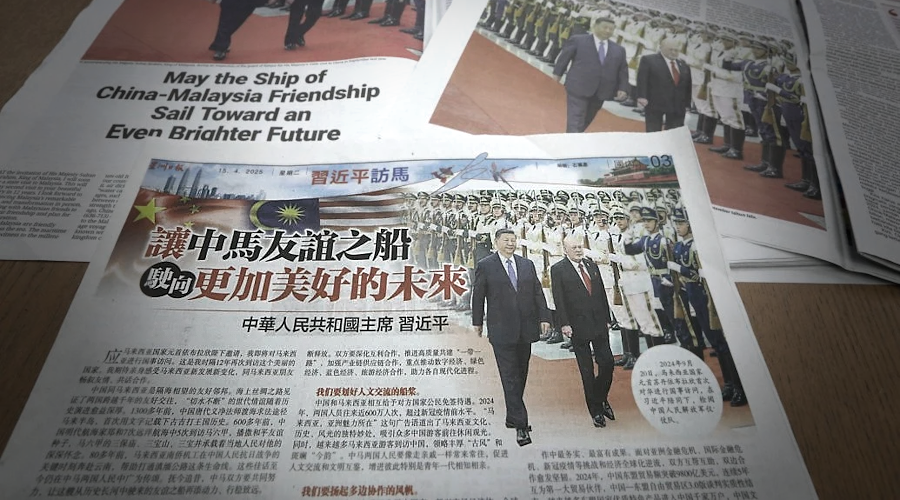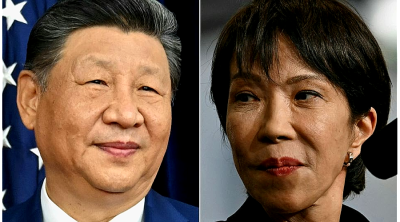
Invited by the King of Malaysia Sultan Ibrahim, Chinese President Xi Jinping is visiting Malaysia from April 15 to 17.
This visit to Malaysia, Vietnam, and Cambodia marks president Xi’s first round of state visits in 2025.
His last state visit to Malaysia was in 2013, during which the two countries upgraded their diplomatic ties to a comprehensive strategic partnership.
China has been the largest trading partner of Malaysia for 16 consecutive years since 2009. In 2024, bilateral trade reached US$212 billion (RM935.47 billion), an 11.4 per cent year-on-year increase and a historical high.
As the ASEAN chair and ASEAN-China dialogue coordinator, Malaysia has a responsibility to push forward the comprehensive strategic partnership between ASEAN and China.
Strategic intent behind Xi’s visit: US-China rivalry
This visit goes beyond diplomatic gestures; it carries profound strategic significance.
Washington’s “reciprocal tariffs” policy challenges China’s dominance in global supply chains and disrupts the steady global free trade order—directly impacting the economic setups of ASEAN nations.
In this context, it is necessary for China to relaunch high-level diplomacy to stabilize its multilateral relations with ASEAN.
During his Vietnam visit, Xi published an article emphasizing that “there are no winners in trade and tariff wars, and protectionism leads nowhere.”
He stressed the importance of upholding the UN-centered international system and an international order based on international law, while standing with the Global South to defend the common interests of developing nations.
He also called for maintaining a multilateral trade system, ensuring supply chain stability and preserving an open, cooperative international environment.
Let’s look back at Trump’s presidency—within his first 100 days, he launched a global trade war under the banner of “reciprocal tariffs,” imposing tariffs of up to 145 per cent on Chinese products, while slashing previously announced high tariffs for other countries to 10 per cent, with a 90-day “observation period.”
Recently, however, the US excluded smartphones, computers, and other electronics—including Chinese products—from these tariffs, signaling that Trump is retreating from his tariff war.
As domestic inflation rises due to these tariffs, he may be forced to back down.
Trump’s unpredictability has pressured China with slowing exports and supply chain shifts, prompting the need to diversify markets and strengthen regional cooperation.
Xi’s tour of the three ASEAN nations is a strategic response to US trade coercion, aiming to reinforce the idea of a “regional community of shared destiny”, expand RMB settlement mechanisms, and enhance technological collaboration—all to mitigate US sanctions risk.
Strategic significance of China–Malaysia cooperation
Malaysia is an important country in the Belt and Road Initiative. It not only has a large Chinese community and shared cultural heritage but also controls the vital Strait of Melaka, a key route for China’s energy and goods moving to and from the Indian Ocean.
In the context of US-China tensions, Malaysia’s strategic importance has grown, particularly in three areas:
The role of Strait of Melaka in the geopolitical tussle: Should the US impose maritime blockades, Malaysia’s stance would directly affect the convenience and security of Chinese sea routes.
Malaysia’s leadership in ASEAN: For China to deepen ties with ASEAN, Malaysia is a natural gateway.
Malaysia maintains a “neutral” stance, which enables close cooperation with China without fully aligning with Washington—positioning Malaysia as a key strategic partner for Beijing.
Xi’s visit aims to strengthen trade ties with Southeast Asian neighbors, soften the blow of Trump’s high tariffs on Chinese exports and defend ASEAN’s rightful interests.
In confronting US sanctions and protectionism, China and Malaysia can deepen cooperation in several areas, such as:
■ Digital economy and green transition (including 5G, AI, and electric vehicles), high-end manufacturing and restructuring of supply chain in building a “China +1” strategic collaboration hub;
■ Currency and financial cooperation: expanding RMB-ringgit settlement, promoting regional currency stability and de-dollarization;
■ Agricultural tech and food security: importing Chinese agri-biotech to boost self-sufficiency.
Looking ahead, Malaysia-China cooperation should move beyond traditional trade and infrastructure toward institutional, technological and ideological integration. This includes:
■ Building a China-Malaysia community of shared destiny: to jointly resist global uncertainties, uphold multilateral order, and protect the interests of Global South nations;
■ Upgrading the regional value chain: moving beyond low-end manufacturing and resource exports, creating a win-win by collaborating in technology, talent, knowledge, and branding;
■ Working together to lead ASEAN to its future direction, balance US-China rivalry and preserve Southeast Asia’s tradition of “peace, autonomy and non-alliance.”
US retaliation? China must unite global forces against US hegemony
Trump’s trade, technology, and financial policies are unilateral and hegemonic, severely endangering global economic stability. Therefore, China should take the lead by:
■ Forming global alliances: As Trump alienates much of the world, China should deepen cooperation with the EU, Africa, Latin America, the Middle East, South Asia, ASEAN, and even Canada and Mexico, to promote fair trade, infrastructure, and industrial upgrades, forming a community of emerging markets. The US must not be allowed to dominate.
■ Promoting multilateral governance reform: In defending the principles of openness, inclusiveness and non-discrimination in institutions like the WTO and IMF, China must push for reforms. The unilateral tariff policies of US are not only unreasonable but also destroy the global free trade system.
■ Advocating a new globalization based on consultation and shared benefits: Facing America’s “small circle” alliances, China should take this opportunity to promote an open global economy, while maintaining a non-aligned but cooperative global framework.
As the saying goes, “Things of the same kind come together, and people with similar values group together.” The Trump administration’s cabinet has proven to share the same mindset—one that lacks morality and rationality, exploits other nations through manipulative behavior.
Since they won’t change, China must take the lead.
Xi’s visit aims to strengthen trade ties with Southeast Asian neighbors, soften the blow of Trump’s high tariffs on Chinese exports and defend ASEAN’s rightful interests.
Thus, Xi’s visit to Malaysia is not just a diplomatic tour. If both nations can cooperate in economy, technology, finance, and value chains, while jointly upholding multilateralism and open order, they can withstand US tariff pressure and seize new opportunities in the next wave of globalization.
For ASEAN, this cooperation could become a key pillar of regional peace and prosperity in future.
ADVERTISEMENT
ADVERTISEMENT








































